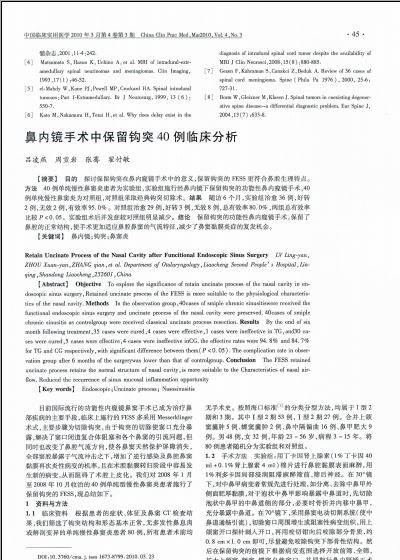住院患儿发生心跳呼吸骤停的死亡危险因素分析(1)
 |
| 第1页 |
参见附件(1548KB,2页)。
【摘要】目的探讨发生心跳呼吸骤停(CRA)住院儿童的死亡危险因素。方法回顾性分析2006年1月至2008年12月入住烟台毓璜顶医院儿童重症监护室(PICU)的CRA的87例患儿临床及心肺复苏(CPR)资料,并进行单因素分析以及多因素非条件Logistic回归分析,分析影响死亡率的危险因素。结果2006年1月至2008年12月入住烟台毓璜顶医院PICU发生CRA的87例患儿实施CRP,45例未恢复自主循环,初步死亡率为51.7%。单因素分析结果显示:年龄、原发病、血气分析、合并症以及发生CRA至CPR开始的时间(TCRA-CPR)、CRA发生时有无气管插管、应用肾上腺素的剂量、CPR持续时间(TCPR)与死亡率有关,Logistic回归分析示TCRA-CPR、TCPR为影响死亡率的独立危险因素。结论住院患儿发生CRA后死亡率较高,年龄、原发病及合并症、动脉血气及CPR质量影响死亡率,其中TCRA-CPR、TCPR为独立危险因素。
【关键词】
心跳呼吸骤停;心肺复苏;死亡率;危险因素
Analysis on fatal risk factors to in-hospital children with cardiorespiratory arrest
XIN Yi,SONG Wei-na,CHU Qing,et al.Department of Pedia rics,Yantai Yuhuang-ding Hospital Affiliated to Qindao Medical College,Yantai 264000,China
【Abstract】ObjectiveTo investigate the fatal risk factos to in-hospital children with cardiorespiratory arrest(CRA).MethodsEighty-seven patients admited to PICU of Yantai Yuhuang-ding Hospital who occurred CRA and received cardiopulmonary resuscitation(CPR)were reviewed from January 2006 to December 2008.The clinical and CPR data was analyzed to explore fatal risk factors by Pearsonχ2test and multivariate and unconditioned Logistic regression analysis.ResultsForty-five of eighty-seven cases did not received return of spontaneous circulation(ROSC),the initial mortality was 51.7%.Age,primary diseases and complications,blood gas analysis,the interval of CRA to CPR(TCRA-CPR),tracheal intubation or not,the dose of adrenaline,the duration of CPR(TCPR)were obviously associated with mortality.Logistic regression analysis revealed that TCRA-CPR and TCPR were independent fatal risk factors.ConclusionMortality of in-hospital children with CRA was high.Age,primary diseases and complications,blood gas analysis and good quality CPR affect mortality,especially the interval of CRA to CPR and duration of CPR.
【Key words】
Cardiorespiratory arrest; Cardiopulmonary resuscitation; Mortality; Risk factor
近年来,随着儿科重症监护治疗的发展以及小儿危重病救治水平的进步,危重患儿生存率明显得到了提高,但发生心跳呼吸骤停(cardiorespiratory arrest,CRA)儿童存活率却仍低,并且各家报道不一[1-3]。本研究拟分析发生CRA的住院儿童的临床及心肺复苏(cardiopulmonary resuscitation,CPR)的疾病与其影响死亡率的危险因素,为临床医生提供可借鉴的参考依据。
1资料和方法
1.1一般资料对2006年1月至2008年12月入住烟台毓璜顶医院儿童重症监护室(PICU)发生CRA的87例患儿进行回顾性分析。纳入标准:在住院期间发生CRA的患儿,亦包括门诊急救观察室发生CRA由PICU医师参与实施CPR等抢救措施的患儿 ......
您现在查看是摘要介绍页,详见PDF附件(1548KB,2页)。